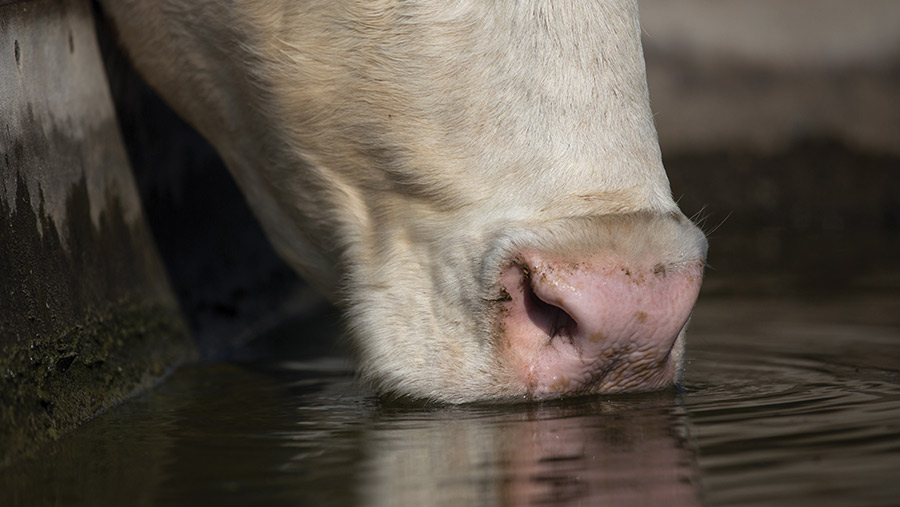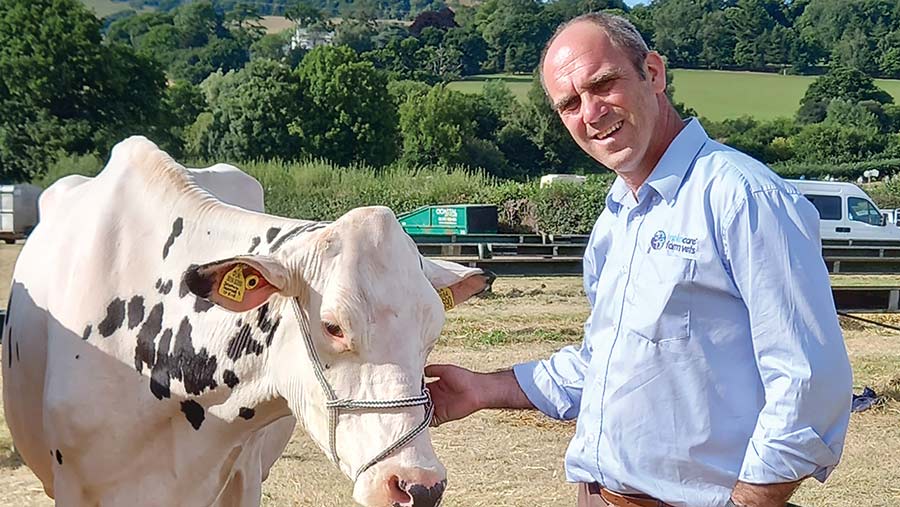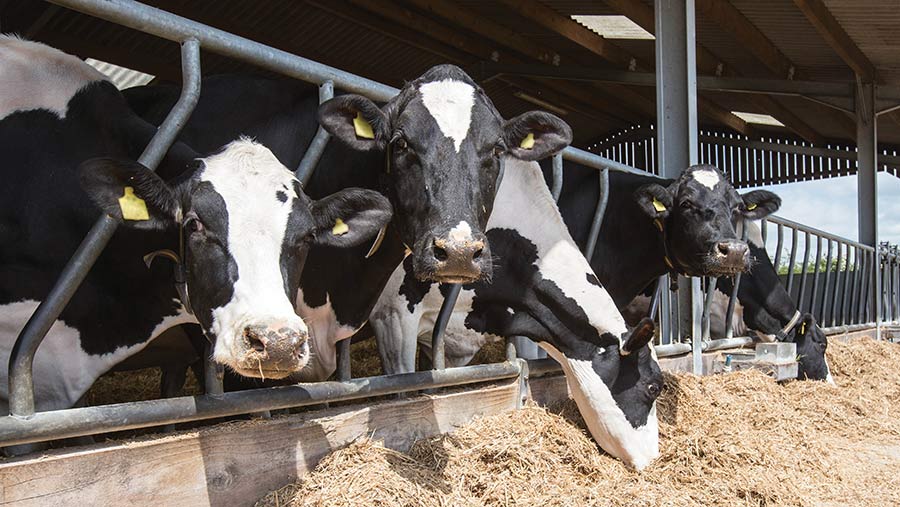How to have a successful dairy transition – vet’s top tips
 © Budimir Jevtic/AdobeStock
© Budimir Jevtic/AdobeStock A tailored dry-cow ration that delivers easy calving, controls milk fever and makes high-quality colostrum is the best start to a successful transition period.
Further measures include monitoring body condition score and using tracking technology via collars or ear tags.
This advice is from Andy Adler of Molecare Farm Vets, following a recent survey of transition practice on 312 dairy farms.
See also: How farmers and advisers are failing transition cows
The survey confirmed his thoughts about the incidence of fresh cow disease and how farmers are managing the transition period to prevent problems.
The survey revealed that 62% of respondents reported more than 2% of milk fever cases in the past 12 months, yet this disease is easily preventable, says Andy.
“Farmers don’t have to have milk fever. Diet principally affects it, and group changes – prepare for health rather than expect disease,” he says.
Andy also discovered that while nearly 66% of farmers said metabolic disease was a barometer of transition success, few were correctly recording body condition score to monitor energy balance.

Andy Adler © Molecare Farm Vets
“Although 85% of farmers said that they condition score, when asked when they did it, we had a range from weekly to six-monthly. Only 24% said that they scored cows at the critical time of drying off,” he says.
He agrees that scoring as well as recording the results is extra work in today’s larger herds, but recommends that farms take advantage of third-party services to carry this out.
“The job will then happen – and results are also objective,” he adds.
He thinks herds would benefit from using automated tracking systems – whether collars or ear tags – that not only detect oestrus, but also monitor rumination and flag up health issues, to assist good stockmanship.
On the back of the survey results, Andy has developed a five-point plan covering the main areas to help set the cow up for her next lactation.
Five-point plan for transition success
1. Feed the right ration
- Ensure close-up dry cows get sufficient forage to give them enough energy to avoid losing weight in early lactation and provide adequate rumen fill. To achieve this, target daily dry matter intakes of 11-13kg/day, and aim to supply 118-125MJ/kg of metabolisable energy (ME) a cow a day.
- Feed intakes drop 24-48 hours before calving, so having a full rumen beforehand means the cow’s body is functioning appropriately and she can eat more after calving to support the increase in milk production.
- Have a strategy for preventing milk fever: feed a partial dietary cation anion balance (DCAB) diet in the close-up period, or administer calcium-rich, post-calving rehydration drinks.
- Choline and methionine are amino acids that can be added to dry cow rations. Choline promotes liver health and colostrum quality, while methionine helps get the right balance of amino acids to create efficient protein synthesis allowing reduced protein levels in diets.

© Tim Scrivener
2. Monitor body condition score (BCS)
- Monitor BCS two months before drying off, so that changes can be made at this point. Once cows are dried off, it is hard to manipulate weight as the calf takes any extra energy supplied in the diet.
Cows that score above 3.5 or below 2 are more likely to have metabolic disease. - Cows losing more than one body condition score between calving and conception have been shown to have lower conception rates. This is because the metabolites of weight loss affect follicle quality. Follicles take 90 days to form, which means the follicles engaged during the transition become the follicles fertilised at first service. It is, therefore, better to prevent cows entering the dry period in excess body condition.
- Monitor BCS again at drying off, targeting a BCS of 2.5-3.
3. Monitor fresh cow disease
Targets for fresh cow disease |
|
| Milk fever | <5% (<2% is achievable) |
| Retained foetal membranes | <10% of cows 24 hours after calving |
| Metritis | <3% |
| Ketosis | <10% |
| Mastitis | <10% in the first 30 days |
| Source: Andy Adler, using data from western Europe and the United States | |
For herds with fewer than 100 cows, monitor annually for good-quality data; larger herds have sufficient numbers to do this more regularly.
One of the most effective ways to determine transition success is to assess colostrum quality: the quantity of antibodies is affected by protein in the diet; the quality of antibodies is affected by the cow’s immune system.
Colostrum quality can be measured using a Brix refractometer and should score above 22.
If colostrum is failing to meet this target, review transition management with your vet and nutritionist.
As well as dry cow diets, look at feed intakes, lying times, group changes and housing facilities.
4. Blood-test to check for energy balance
- Whenever there is a change in diet or housing, check the energy balance of calving and fresh cows.
- Blood tests from a sample of 5-6 cows can be used to establish whether diets are delivering the right amount of energy. This can be useful to identify sub-clinical disease and prevent issues.
- Measure beta-hydroxybutyrate (BHB) levels five days pre-calving and 10 days post-calving.
- It is also worth testing for non-esterified fatty acids (Nefas) pre-calving to see if fat mobilisation has already started. If it has, cows may be in negative energy balance. Pre-calving, more than 800 millimoles/litre (mmol/litre) indicates fat mobilisation; after calving, more than 1 mmol/litre indicates subclinical ketosis.
5. Housing requirements
- Older transition cow sheds can work perfectly well, provided stocking rates are managed appropriately and all cows have enough access to feed and clean water.
- Avoid frequent group changes as social hierarchy stress affects intakes.
- Provide at least 0.85m of feed space a transition cow.
- Water trough space should be at least 10cm a head.
- Pre-calving yards should be stocked at 1.25 sq m/1,000 litres.
- Post-calving, do not stock cubicles at more than 90%.
Source: Andy Adler, Molecare Farm Vets
